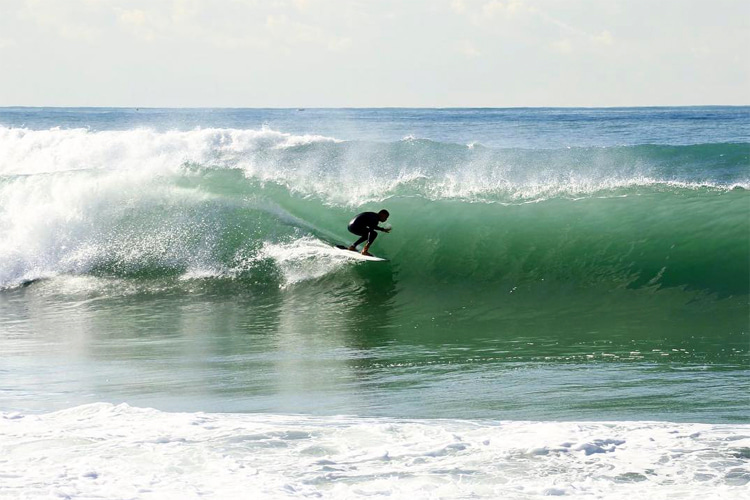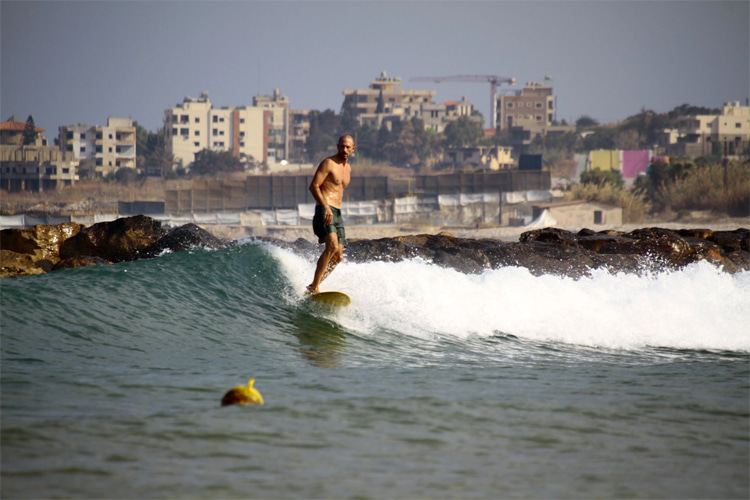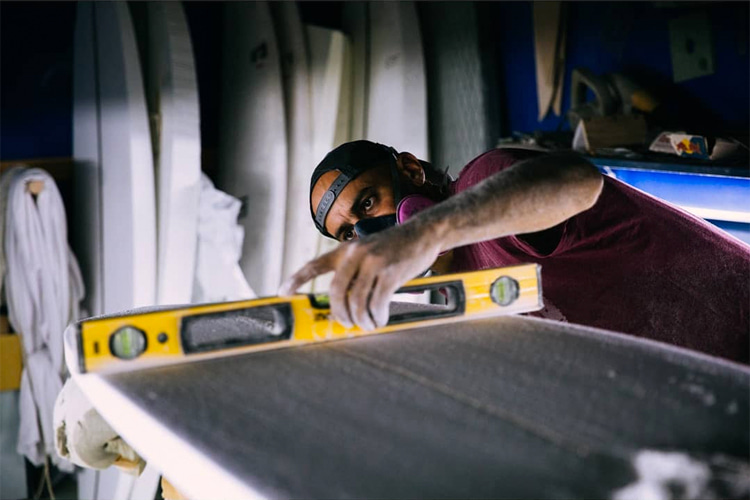Located on the eastern end of the Mediterranean Sea, Lebanon is pretty much a coastal nation. Surprisingly, or maybe not, it has great waves and a tight surfing community.
With 125 miles (220 kilometers) of coastline, the Republic of Lebanon is a young independent country with nearly seven million inhabitants.
In the 1950s and 1960s, it was hailed as the “Switzerland of the East,” thanks to its financial power and political stability.
Beirut, the country’s capital, was also known as the “Paris of the Middle East” – a cosmopolitan, exotic, and multicultural city with a vibrant vibe.
However, the devastating Lebanese Civil War (1975–1990) shattered the country’s unity and led to Syrian (1975 to 2005) and Israeli (1985 to 2000) occupations.
Lebanon never quite recovered from the wounds of war, opportunism, and corruption. In the 21st century, the country also became the home of hundreds of thousands of Palestinian and Syrian refugees.
On August 4, 2020, the Beirut explosions killed over 200 people, caused over $15 billion in property damage, and left 300,000 people homeless.
The nation will have to rise from the ashes of destruction and build a better future for those who decide to stay.
In the past, Lebanon attracted millions of tourists every year, contributing to 20 percent of its GDP before the civil war broke.
The Lebanese will now have to heal the wounds, unite and make their country a safe and pleasant place for them and future generations.


Jiyeh, Byblos, Batroun and Tyre
Believe it or not, the Mediterranean Sea can produce solid swells.
For example, when a large fetch is created between Italy and Greece, it has enough area to grow and arrive in Lebanon as a high-period swell, thus producing good waves for surfing.
So, it’s no surprise to see that Lebanon has a small yet enthusiastic wave riding community that leaves no one behind.
Christians and Muslims, boys and girls, men and women of all ages are increasingly discovering the appeal of surfing and sharing it with their friends and families.
The country has four main surf epicenters – Jiyeh, Byblos, Batroun, and Tyre.
Jiyeh is a small town located 15 miles (24 kilometers) south of Beirut. It’s the surfing capital of Lebanon.
The laid-back seaside resort is the home of Surf Lebanon, a surf school and surf shop run by Ali El-Amine, a Lebanese-American who left California.
He represents his country as a member of the International Surfing Association (ISA), the world governing body for the sport.


The Jiyeh waves break in a wide, open bay located just south of the local marina. The spot looks just like any other quality beach break we see in California, Europe, or Australia.
“The first time I knew there was potential surf was in April 2006. I was visiting family, and that’s when I saw that it turns on,” Ali El-Amine explained.
“I had lived in Dubai and knew that the sea had more potential than the Gulf, and they got waves there. We registered the company in September 2012.”
At the stunning old city of Byblos, a UNESCO World Heritage Site, there’s a long beach directly facing west.
This community had been continuously inhabited since 5,000 BC and has one of the most popular beaches in the region.
Batroun, one of the oldest cities in the world, is another small Lebanese town with a tight surfing community.
The area has several small coves that funnel swells and create splendid waves for all experience levels.
Tyre is another precious historic surfing gem. It’s also a World Heritage Site with plenty of ancient heritage and stunning monuments.
The place has the reputation of having some of Lebanon’s cleanest waters and beaches.
The Tyre Coast Nature Reserve features a breathtaking 1.1-mile (1.8 kilometers) sand lined beach with plenty of waves and peaks.


Slow Start, Promising Future
The evolution of surfing in Lebanon was slow, but it always an ever-growing phenomenon made of persistence, resilience, and passion.
The Lebanese rode their first waves in the early 1970s before civil war broke out in the country.
In the 1990s, there were still no more than 15 surfers in this Mediterranean nation.
By 2010, the number rose to around 40, and, in the 2020s, there should be between 100 and 200 wave riders, half of them extremely active.
“The scene is relatively underground – we’re not that many. There’s a lot of weekend warriors and a handful of hardcore surfers that are here every swell, especially when it gets big,” adds El-Amine.
The pristine sandy beaches of Lebanon witness good and consistent waves primarily during winter (December-March).
Still, the country’s coastline is now a go-to surf destination almost all year round. And the good news is that there’s no localism and everyone is welcome.
Paul Abbas is the only surfboard shaper in Lebanon.
He learned to bring boards to life by himself by watching YouTube videos today. Today, he runs his own business – P.A. Surfboards.
The future will certainly bring joy and favorable swells to this pristine land. There might not be many, but Lebanon’s finest surf breaks have plenty of opportunities ready to be explored.





Recent Comments